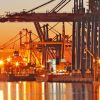“The most rapidly growing economic region in the world”
An interview with Marko Walde, spokesperson for the German-ASEAN Chamber Network, about the ASEAN Free Trade Area and the EU’s role.

Mr Walde, you are Managing Director of the German-ASEAN Chamber Network. Why are the German Chambers of Foreign Trade in Indonesia, Malaysia, Myanmar, the Philippines, Singapore, Thailand and Vietnam working together in this network?
The ASEAN countries have carried out further integration and harmonisation measures to create a joint single market with duty-free movement of goods, free flow of services, capital, investments and labour. These developments and the extremely positive forecasts for the coming years with the various advantages of the individual member states are also of great interest for German businesses, in particular small and medium-sized enterprises. For these reasons the German-ASEAN Chamber Network was founded in 2012 by the German Chambers of Foreign Trade in the ASEAN region.
The ASEAN Free Trade Area is to come into effect in late 2015. Could you describe this entity?
The ten member states of the ASEAN union, being Indonesia, Thailand, Malaysia, Vietnam, the Philippines, Brunei Darussalam and Singapore along with Laos, Cambodia and Myanmar, represent what is currently the most rapidly growing economic region in the world. ASEAN was initially merely a political unit, but is being enhanced by economic harmonisation and standardisation. A joint economic area with a total population of more than 600 million people and an economic output of approximately 2.3 billion US dollars is being created. Over the next five years, average growth in real gross domestic product of 6% is expected in the region. Furthermore, the Southeast Asian economies are proving attractive with expanding industries and a middle-class whose purchasing power is continually increasing.
What opportunities does the Free Trade Area offer for German industry?
There are benefits for the German export sector even today from the economic upturn and the new business opportunities resulting. Products with the label “Made in Germany” are already very popular in the region. The standardisation and focus on international standards and regulations by the ASEAN nations brings further advantages. Inter-ASEAN trade is clearly facilitated by the free movement of goods, so that German companies which have to date perhaps been present only in one location in the region now gain much easier access to all ten markets in ASEAN. What is problematic, however, is that there has been a great increase in the mix of overlapping regional and bilateral free trade agreements (FTAs) and the EU is clearly lagging behind in concluding bilateral FTAs. Companies from other countries are therefore currently enjoying competitive advantages and German companies are finding it hard to get their bearings in the dense network of the various regulations of the existing FTAs.
There have already been repeated efforts to develop a free trade agreement between the EU and ASEAN. Wouldn’t now be the right time for a new initiative?
That would be very desirable, however the opportunity to do this was initially missed. The EU has now decided to enter into agreements with individual countries. The FTA with Singapore has already been signed, the FTA with Vietnam has been negotiated and is about to be signed. This means that binding commitments exist and there is also a clear course for the EU, so that this development now should not be questioned again. The FTAs with Singapore and Vietnam will perhaps act as a precedent for other countries, so that an EU-ASEAN FTA could be developed de facto.▪
Interview: Martin Orth
Marko Walde’s country check*
Vietnam
The legal framework allows a rapid and lasting entry into the market. The Vietnamese are great Germanophiles and this, along with their great reliability and readiness to learn, are proving to be very enabling location features.
Indonesia
The country offers a variety of attractive elements for foreign investors: a strategically favourable location, an abundance of natural resources, a growing domestic market and the largest market in the region with around 240 million people.
Malaysia
Malaysia has set itself the goal of catching up to the leading economies by 2020. Diverse investments, tax incentives and privatisation should help it reach its target.
Myanmar
Myanmar is still in the early stages of its development, but nevertheless is currently laying out the course to strengthen further its role in the ASEAN region.
Singapore
The geographic location in the centre of the emerging Asian market is just one of Singapore’s numerous advantages. As the “gateway to Asia”, the country attracts international businesses.
Thailand
The Thai government is attracting foreign investors with a comprehensive reform package. Thailand is already one of the most important investment locations for German businesses among the ASEAN countries.
Philippines
The very stable political and legal framework have resulted in a huge economic upturn in recent years.
*of the countries with a German Chamber of Commerce

